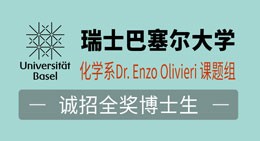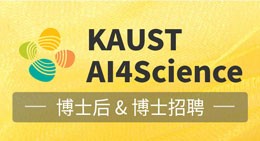-
Uncertainty assessment of solute concentration in natural aquifers sampled from observation wells Adv. Water Resour. (IF 4.0) Pub Date : 2025-03-16
Felipe P.J. de Barros, Jinwoo ImThe subsurface environment’s complex heterogeneous structure poses challenges for accurately modeling transport phenomena due to limited data and measurement errors, leading to uncertainties in solute transport predictions. This study proposes a computational framework to semi-analytically compute the cumulative distribution function (CDF) of solute concentration in heterogeneous aquifers. We investigate
-
Effects of wettability heterogeneity on multiphase flow: From pore-scale mechanisms to cross-scale insights Adv. Water Resour. (IF 4.0) Pub Date : 2025-03-13
Jingrui Liu, Kang Duan, Rihua Jiang, Qiangyong ZhangThe macroscopic behavior of multiphase flow systems is governed by interfacial dynamics, which are a strong function of the synergy between viscous forces and wettability. However, the effects of wettability heterogeneity, an inherent feature of natural porous media, remain poorly understood. In this study, we incorporated spatial-related wettability into phase field model and systematically examined
-
Spatial variations of velocity and pressure fields induced by large-scale (single stalk) and small-scale (sediment) roughness elements Adv. Water Resour. (IF 4.0) Pub Date : 2025-03-13
Angel Monsalve, William Jeff Reeder, Katherine Adler, Jose Roberto Moreto, Xiaofeng Liu, Daniele ToninaCharacterizing velocity and pressure fields in aquatic systems is crucial for understanding fundamental processes such as sediment transport, hyporheic flow, air-water exchange, and habitat quality. While large obstacles like vegetation stalks are known to create significant localized pressure gradients, the role of small-scale bed roughness in generating local pressure gradients remains poorly understood
-
Impact of saturation on continuum-scale conductivity and tracer dispersion in heterogeneous porous media Adv. Water Resour. (IF 4.0) Pub Date : 2025-03-10
Doron Kalisman, Brian BerkowitzThis study investigates the interplay among water saturation, hydraulic conductivity, and mechanical dispersion in heterogeneous porous media at the continuum scale. Mechanical dispersion of dissolved chemical tracers is influenced directly by water velocity variability, which is governed by the porous structure, the distribution of the water phase within it, and its corresponding conductivity field
-
Lattice Boltzmann modelling of capillarity, adsorption and fluid retention in simple geometries: Do capillary and film water have equal matric suction or not? Adv. Water Resour. (IF 4.0) Pub Date : 2025-03-10
Zi Li, Zhenlei Yang, Sergio Galindo-Torres, Ling LiThe pore water retained in unsaturated soil includes film water attached on the solid surface and capillary water in corners or pores, which are mainly controlled by adsorptive force from the solid surface and capillary force from the water-gas interface, respectively. The soil water retention (SWR) curve represents the fundamental characteristic of unsaturated soil, in which the connected capillary
-
Assessment of hybrid RANS/LES models for the prediction of the flow and scour around a wall-mounted cylinder Adv. Water Resour. (IF 4.0) Pub Date : 2025-03-07
Alban Gilletta, Cyrille Bonamy, Marie Robert, Julien ChauchatIn many environmental flow situations, a solid body emerges from a sediment bed. This may occur in natural systems, for example when a tree-root emerges from the bed, or around a man-made structure such as a bridge pier or a wind turbine foundation. When this situation occurs, various flow-structure interactions such as the horseshoe vortex or vortex shedding lead to the scour process, namely the erosion
-
Derivation of weakly hydrodynamic models in the Dupuit–Forchheimer regime Adv. Water Resour. (IF 4.0) Pub Date : 2025-03-07
Martin ParisotThe current study is dedicated to the formal derivation of a hierarchic of asymptotic models that approximate the groundwater waves problem within the Dupuit–Forchheimer regime, over a regular, non-planar substratum. The derivation methodology employed bears resemblance to the techniques utilized in hierarchic of asymptotic models for approximating the water waves problem in the shallow water regime
-
Transfer learning for geological carbon storage forecasting using neural operator Adv. Water Resour. (IF 4.0) Pub Date : 2025-03-04
Andres Nunez, Siddharth Misra, Yusuf FalolaGeological carbon storage (GCS) is critical for sequestering CO2 deep underground. GCS projects may face environmental challenges, such as leakage risks, adverse pressure buildup, and groundwater contamination. Numerical simulators play a vital role in accurate forecasting but can be computationally expensive. In this work, we leveraged an updated Fourier Neural Operator (FNO) which includes data sparsity
-
Unveiling surface-subsurface flow interactions of a salmon redd Adv. Water Resour. (IF 4.0) Pub Date : 2025-03-04
Brandon Hilliard, William J. Reeder, Ralph Budwig, Vibhav Durgesh, Bishal Bhattarai, Benjamin T. Martin, Tao Xing, Daniele ToninaFemale salmonids bury their eggs in streambed gravel by digging a pit where they lay their eggs, which they then cover with gravel from a second pit, forming a rough-surfaced dune-like structure called a redd. The interaction between a redd and the stream flow induces surface water to flow into the sediment, through egg pockets, and reemerge downstream of the crest. These downwelling and upwelling
-
-
A Dupuit-Forchheimer solution to the extraction of seawater from coastal aquifers Adv. Water Resour. (IF 4.0) Pub Date : 2025-02-27
Anthony D. Miller, Amir Jazayeri, S. Cristina Solórzano-Rivas, Adrian D. WernerSeawater intrusion can be mitigated by extracting saltwater, creating a negative hydraulic barrier that reduces the extent of saltwater in coastal aquifers. The effects of seawater extraction are analyzed in the current study through a semi-analytical methodology based on sharp-interface, steady-state conditions. The methodology is based on the Dupuit-Forchheimer approximation and applies a power series
-
Pore-scale relative permeability and saturation analysis under wide-ranging injection velocity and wettability during primary CO2 injection for geological carbon sequestration Adv. Water Resour. (IF 4.0) Pub Date : 2025-02-27
Muhammad Nasir, Shintaro Matsushita, Kailin Wang, Masayuki Osada, Shu Yamashita, Wilson Susanto, Sotheavuth Sin, Tetsuya SuekaneWe performed two-dimensional (2D) pore-scale simulations of primary CO2 injection using a weakly compressible scheme for geological carbon sequestration (GCS) applications. The aim was to analyze pore-scale relative permeability and saturation of CO2 under wide-ranging injection velocities and wettabilities. The results show that saturation is highest for viscous fingering, lowest for crossover (−
-
Salinity effects on fines migration in aquifers: Stochastic model and its upscaling Adv. Water Resour. (IF 4.0) Pub Date : 2025-02-26
C. Nguyen, Y. Yang, G. Loi, T. Russell, P. BedrikovetskyColloidal-suspension-nano flows with varying ionic strength are widely present in nature and industry. The variation of brine salinity, which highly affects electrostatic particle-rock interaction, triggers fines detachment and consequent rock alteration. The microscale models for fines detachment at the pore-particle and at rock-reservoir scales are widely used to predict core and field behaviour
-
Effective permeability of fluvial lithofacies in the Bunter Sandstone Formation, UK Adv. Water Resour. (IF 4.0) Pub Date : 2025-02-25
Shakhawat Hossain, Gary J. Hampson, Carl Jacquemyn, Matthew D. Jackson, Dmytro Petrovskyy, Sebastian Geiger, Julio D. Machado Silva, Sicilia Judice, Fazilatur Rahman, M. Costa SousaUnderstanding effective permeability is crucial for predicting fluid migration and trapping in subsurface reservoirs. The Bunter Sandstone of northwestern Europe hosts major groundwater and geothermal resources and is targeted for CO2 storage projects. Here the effective permeability of fluvial facies within the Bunter Sandstone Formation was assessed using facies-scale models. Twelve lithofacies were
-
A phase-field approach to model evaporation from porous media: Modeling and upscaling Adv. Water Resour. (IF 4.0) Pub Date : 2025-02-25
Tufan Ghosh, Carina Bringedal, Christian Rohde, Rainer HelmigWe develop a phase-field model for evaporation from a porous medium by explicitly considering a vapor component together with the liquid and gas phases in the system. The phase-field model consists of the conservation of mass (for phases and vapor component), momentum, and energy. In addition, the evolution of the phase field is described by the Allen–Cahn equation. In the limit of vanishing interface
-
New insights into the nonmonotonic wetting effect: The principle of minimum operating power during two-phase displacement Adv. Water Resour. (IF 4.0) Pub Date : 2025-02-23
Xiaokang GuoIn this study, based on the minimum operating power principle, the potential control mechanism of nonmonotonic wetting effects in porous media is analyzed. When different wetting conditions are applied to the system, the contribution weights of different energy contribution terms are different during the process when the system approaches the minimum operating power state. For weak drainage or weak
-
Effects of tides and subsurface dams on the land-sourced contaminant transport: Laboratory and numerical investigation Adv. Water Resour. (IF 4.0) Pub Date : 2025-02-19
Jina Yin, Yunshu Wu, Jiangjiang Zhang, Tongchao Nan, Chunhui LuThe presence of tides and subsurface dams adds complexity to the migration and mixing processes of land-sourced contaminant in coastal aquifers. While prior studies have explored individual effect of tides and subsurface dams, their combined impact on the transport characteristics of land-sourced contaminant remains unclear. This study conducted laboratory experiments and numerical simulations to thoroughly
-
A data-driven physics-informed deep learning approach for estimating sub-core permeability from coreflooding saturation measurements Adv. Water Resour. (IF 4.0) Pub Date : 2025-02-17
A. Chakraborty, A. Rabinovich, Z. MorenoEstimations of multi-phase flow properties, mainly permeability, are crucial for several applications, such as CO2 sequestration, efficient oil and gas recovery, and groundwater contaminant treatment. Current methods for estimating the sub-core scale properties rely on numerical simulations, which can be time-consuming. A suitable alternative to numerical simulations is Deep Neural Networks (DNN),
-
A free energy based model for water transfer in amphiphilic soils Adv. Water Resour. (IF 4.0) Pub Date : 2025-02-14
Florian Cajot, Claude Doussan, Philippe BeltrameA 3D macroscopic gradient-dynamics model is developed and applied to sandy soil in presence of exopolysaccharides (EPS), to mimic a soil influenced by root exuded mucilages (rhizospheric soil). Depending on water content, amphiphilic soil has a hydrophilic or hydrophobic behavior which impacts water transfer and retention. To model this saturation-dependent wettability, we propose a nonequilibrium
-
Real-time forecasting of coastal flood inundations under regulated reservoir and storm-tide influences Adv. Water Resour. (IF 4.0) Pub Date : 2025-02-13
Ashrumochan Mohanty, Bhabagrahi Sahoo, Ravindra Vitthal KaleCoastal regions are vulnerable to flood risks due to the combined effects of storm surges, riverine flooding, upstream reservoir releases, and inland rainfall. Traditional models often fail to integrate these critical factors, leading to inaccuracies in flood extent forecasting. This study addresses this gap by developing a comprehensive coastal flood inundation forecasting framework for a region impacted
-
Mapping dissolved carbon in space and time: An experimental technique for the measurement of pH and total carbon concentration in density driven convection of CO[formula omitted] dissolved in water Adv. Water Resour. (IF 4.0) Pub Date : 2025-02-13
Hilmar Yngvi Birgisson, Yao Xu, Marcel Moura, Eirik Grude Flekkøy, Knut Jørgen MåløyWe present an experimental technique for determining the pH and the total carbon concentration when CO2 diffuses and flows in water. The technique employs three different pH indicators, which, when combined with an image analysis technique, provides a dynamic range in pH from 4.0 to 9.5. In contrast to usual techniques in which a single pH indicator is used, the methodology presented allows not only
-
Interaction between corner and bulk flows during drainage in granular porous media Adv. Water Resour. (IF 4.0) Pub Date : 2025-02-13
Paula Reis, Gaute Linga, Marcel Moura, Per Arne Rikvold, Renaud Toussaint, Eirik Grude Flekkøy, Knut Jørgen MåløyDrainage of a liquid by a gas in porous media can be broken down into two main mechanisms: a primary piston-like displacement of the interfaces through the bulk of pore bodies and throats, and a secondary slow flow through corners and films in the wake of the invasion front. In granular porous media, this secondary drainage mechanism unfolds in connected pathways of pendular structures, such as capillary
-
Modeling poroelastic response of an unsaturated, multi-layer soil with gravity effect to time-invariant stress loading Adv. Water Resour. (IF 4.0) Pub Date : 2025-02-12
WeiCheng Lo, Nan-Chieh Chao, Jhe-Wei LeeIn contrast to homogeneous soil deposits, stratified layering introduces vertical heterogeneity, resulting in not only greater spatial variability but also more complex structural responses. This complexity is further exacerbated by gravitational compaction, which gives rise to distinct fluid flow and solid deformation mechanics within each variably saturated layer and at the interfaces between layers—markedly
-
Two-dimensional capillarity-driven seepage from a lined buried ditch: The Kornev subsurface irrigation “Absorptional” method revisited Adv. Water Resour. (IF 4.0) Pub Date : 2025-02-11
Anvar Kacimov, Yurii Obnosov, Tatyana Nikonenkova, Andrey SmaginKornev's (1935, see e.g. p.74, Fig. 34 - right panel) “open system” of capillarity-driven wetting of a fine-textured soil from a buried ditch filled by a coarse porous material is modeled analytically, using the methods of hodograph, and numerically, with the help of HYDRUS2D. Gravity, Darcian resistance of the soil at full saturation but negative pressure, and capillarity are three physical competing
-
The role of injection method on residual trapping: Insights into bridging scales and heterogeneity Adv. Water Resour. (IF 4.0) Pub Date : 2025-02-11
Catherine Spurin, Sharon Ellman, Tom Bultreys, Takeshi Kurotori, Sally Benson, Hamdi A. TchelepiCO2 injection into subsurface reservoirs provides a long-term solution to anthropogenic emissions. A variable injection rate (such as ramping the flow rate up or down) provides flexibility to injection sites, and could influence the amount of residual trapping. Observations made in cm-scale samples showed that starting at a low flow rate established a flow pathway across the core at a low capillary
-
Solving the discretised shallow water equations using neural networks Adv. Water Resour. (IF 4.0) Pub Date : 2025-02-09
Boyang Chen, Amin Nadimy, Claire E. Heaney, Mohammad Kazem Sharifian, Lluis Via Estrem, Ludovico Nicotina, Arno Hilberts, Christopher C. PainWe present a new approach to the discretisation and solution of the Shallow Water Equations (SWE) based on the finite element (FE) method. The discretisation is expressed as the convolutional layer of a neural network whose weights are determined by integrals of the FE basis functions. The resulting system can be solved with explicit or implicit methods. Expressing and solving discretised systems with
-
Analytical study of nonlinear consolidation effect on contaminant transport in an aquitard coupling diffusion and adsorption Adv. Water Resour. (IF 4.0) Pub Date : 2025-02-06
Zhaofeng Li, Xi Zou, Wen Zhang, Xiaoli Wu, Yue Hu, Genxu Wang, Walter A. IllmanAquitards, which widely occur throughout sedimentary basins or alluvial plains, play important roles in groundwater storage and contaminant transport. In this study, a mathematical model for one-dimensional contaminant transport which considered the combined effects of diffusion, adsorption and nonlinear consolidation deformation processes in an aquitard (NCD model) was formulated. An analytical solution
-
Effect of an interface undulation on convective dissolution of CO[formula omitted] Adv. Water Resour. (IF 4.0) Pub Date : 2025-02-05
R.M. Lucena, J. Pontes, F. Brau, A. De Wit, N. MangiavacchiWhen a partially miscible fluid dissolves into a host phase below it, buoyancy-driven fingering develops when the diffusive boundary solution created is denser than the underlying solvent. In many situations, the interface between the two fluids may present level variations introduced by geometrical irregularities. We study here numerically the influence of this interface undulation on the properties
-
Modeling and design of air injection-based hydraulic barriers Adv. Water Resour. (IF 4.0) Pub Date : 2025-01-31
Ilan Ben-NoahHydraulic barriers are useful for manipulating groundwater flow to mitigate and contain harmful environmental effects. Injecting air into the aquifer has been suggested as a cost-efficient, sustainable, and reversible hydraulic barrier. In this, the injected air reduces the conductance of the aquifer to water flow. However, this practice is not commonly used despite its potential, probably due to a
-
Inferring experimental colloid removal with an inverse two-population model linking continuum scale data to nanoscale features Adv. Water Resour. (IF 4.0) Pub Date : 2025-01-30
Sabrina N. Volponi, Giovanni Porta, Bashar M. Al-Zghoul, Diogo Bolster, William P. JohnsonModels of colloid transport in porous media that assume constant fractional loss per grain passed fail in the presence of repulsive barriers to attachment, under which condition experiments produce profiles of colloid concentrations with distance from source that are nonexponential. Nonexponential removal is hypothesized to arise from variable likelihood of encountering nanoscale regions of attraction
-
Simplifications of macroscopic models for heat and mass transfer in porous media Adv. Water Resour. (IF 4.0) Pub Date : 2025-01-28
Didier Lasseux, Francisco J. Valdés-ParadaWhen performing upscaling of transport phenomena in multiscale systems it is not uncommon that terms of different physical nature than those present at the underlying scale arise in the resulting averaged differential equations. For diffusive species mass transfer with heterogeneous reaction and conductive heat transfer, additional terms result from upscaling using the volume averaging method, which
-
On the permeability-surface area-porosity relationship for dissolving porous media Adv. Water Resour. (IF 4.0) Pub Date : 2025-01-23
Kai Li, Ran Hu, Ya-Nan Zhang, Zhibing Yang, Yi-Feng ChenDissolution in porous media is widespread in natural and engineered systems, accompanied by the evolution of geometric structure, permeability and surface area of the porous matrix. Although extensive research has examined dissolution dynamics in porous media, there is a lack of quantitative characterization of the relationships among permeability, surface area and porosity, which depend on dissolution
-
Three-dimensional saturated-unsaturated flow to a well in an alluvial fan wedge-shaped aquifer Adv. Water Resour. (IF 4.0) Pub Date : 2025-01-22
Mohammad M. Sedghi, Hongbin ZhanAlluvial fan aquifers are among the most productive aquifers around the world. At present, in mathematical models of these types of aquifers, the unsaturated flow is usually neglected, and the instantaneous or delayed drainage boundary conditions are considered at the water table. The goal of this work is to present an analytical model of the drawdown due to a partially penetrating well in an unconfined
-
A well-balanced conservative high-order alternative finite difference WENO (A-WENO) method for the shallow water equations Adv. Water Resour. (IF 4.0) Pub Date : 2025-01-18
Ziyao Xu, Chi-Wang ShuIn this paper, we develop a well-balanced, conservative, high-order finite difference weighted essentially non-oscillatory (WENO) method for the shallow water equations. Our approach exactly preserves the moving-water equilibria of the shallow water equations with non-flat bottom topography. The proposed method consists of two key components. First, we reformulate the source term into a flux-gradient
-
A hybrid CNN-transformer surrogate model for the multi-objective robust optimization of geological carbon sequestration Adv. Water Resour. (IF 4.0) Pub Date : 2025-01-17
Zhao Feng, Bicheng Yan, Xianda Shen, Fengshou Zhang, Zeeshan Tariq, Weiquan Ouyang, Zhilei HanThe optimization of well controls over time constitutes an essential step in the design of cost-effective and safe geological carbon sequestration (GCS) projects. However, the computational expense of these optimization problems, due to the extensive number of simulation evaluations, presents significant challenges for real-time decision-making. In this paper, we propose a hybrid CNN-Transformer surrogate
-
Incorporating geological structure into sensitivity analysis of subsurface contaminant transport Adv. Water Resour. (IF 4.0) Pub Date : 2025-01-13
Lisa Bigler, Tara LaForce, Laura SwilerSimulating subsurface contaminant transport at the kilometer-scale often entails modeling reactive flow and transport within and through complex geologic structures. These structures are typically meshed by hand and as a result geologic structure is usually represented by one or a few deterministically generated geological models for uncertainty studies of flow and transport in the subsurface. Uncertainty
-
-
A training trajectory random walk model for upscaling colloid transport under favorable and unfavorable conditions Adv. Water Resour. (IF 4.0) Pub Date : 2025-01-07
Bashar M. Al-Zghoul, William P. Johnson, Diogo BolsterIn this study, we present a general random walk model for upscaling colloid transport and retention in two-dimensional porous media. The model is based on direct sampling from spatial and temporal jump distributions of single-interceptors, colloids that first enter the near-surface zone within 200 nm of a collector surface, derived from mechanistic pore-assembly trajectory simulations. This framework
-
Global sensitivity analysis of mass transfer and reaction dynamics for electrokinetic transport in porous media Adv. Water Resour. (IF 4.0) Pub Date : 2025-01-03
R. Sprocati, A. Guadagnini, L. Ceresa, A. Gallo, M. RolleElectrokinetic (EK) technologies are promising solutions for the remediation of contaminated sites, particularly in low-permeability porous media. However, their widespread adoption is hindered by the challenge of predicting the complex, coupled physico-chemical processes triggered by the application of external electric fields in the subsurface. Numerical models therefore represent essential tools
-
On the modeling of the foam dynamics in heterogeneous porous media Adv. Water Resour. (IF 4.0) Pub Date : 2025-01-02
Jhuan B. Cedro, Filipe F. de Paula, Grigori ChapiroFoam flow in porous media is important in various engineering applications, including soil remediation, carbon dioxide sequestration, and enhanced oil recovery. This study explores the relationship between bubble density and permeability in foam flow models, focusing on how different approaches capture foam formation in highly permeable regions. We compare two mechanistic models numerically. The first
-
Stochastic model for subsurface water flow in Swiss catchments Adv. Water Resour. (IF 4.0) Pub Date : 2024-12-31
M.C. Bovier, S. Fedotov, S. Ferraris, A. Gentile, B. ToaldoUnderstanding water movement in catchments subsurface is crucial for numerous applications such as pollutant contamination, nutrient loss, water resource management and ecosystem functioning. Among the variables of particular interest, the transit times of water particles and their statistical distribution are a desirable output. Nevertheless, past approaches assume explicitly the form of the transit
-
Corrigendum to “Investigating Steady Unconfined Groundwater Flow using Physics Informed Neural Networks” [Advances in Water Resources Volume 177 (2023), 104445] Adv. Water Resour. (IF 4.0) Pub Date : 2024-12-30
Mohammad Afzal Shadab, Dingcheng Luo, Eric Hiatt, Yiran Shen, Marc Andre Hesse -
Investigating solute transport and reaction using a mechanistically coupled geochemical and geophysical modeling approach Adv. Water Resour. (IF 4.0) Pub Date : 2024-12-28
Flore Rembert, Nicole M. Fernandez, Linda Luquot, Roger Guérin, Damien JougnotThe use of geoelectrical monitoring of groundwater quality and contamination is a growing and promising topic. Nowadays, geoelectrical methods are mostly used as qualitative detection tools. This study aims to better use geoelectrical signals as a complementary tool for the quantitative characterization of chemical species transport and reaction in the porous matrix by developing a coupled mechanistic
-
Reactive transport modeling to reveal the impacts of beach morphodynamics, storm floods and seasonal groundwater recharge on the biogeochemistry of sandy subterranean estuaries Adv. Water Resour. (IF 4.0) Pub Date : 2024-12-26
Stephan L. Seibert, Gudrun Massmann, Rena Meyer, Vincent E.A. Post, Janek GreskowiakSubterranean Estuaries (STEs) are important biogeochemical reactors at the land-ocean interface. They transform dissolved species prior to discharge, thereby influencing chemical fluxes from land to sea. The coupling between physical flow and biogeochemical reactions in the STE is complex, and a deeper process understanding demands the application of reactive transport modeling (RTM). Most previous
-
A computationally efficient hybrid neural network architecture for porous media: Integrating convolutional and graph neural networks for improved property predictions Adv. Water Resour. (IF 4.0) Pub Date : 2024-12-24
Qingqi Zhao, Xiaoxue Han, Ruichang Guo, Cheng ChenPorous media is widely distributed in nature, found in environments such as soil, rock formations, and plant tissues, and is crucial in applications like subsurface oil and gas extraction, medical drug delivery, and filtration systems. Understanding the properties of porous media, such as the permeability and formation factor, is crucial for comprehending the physics of fluid flow within them. We present
-
Reactive precipitation during overlaying CO2 dissolution into brine: The role of porous structure Adv. Water Resour. (IF 4.0) Pub Date : 2024-12-20
Shuai Zheng, Ke Xu, Dongxiao ZhangAfter sequestration of CO2 into subsurface saline aquifer, CO2 cap forms at the top of a stratum. As overlaying CO2 dissolves into brine, precipitation reactions between CO2 and in-situ ions emerge. The role of reactive precipitation during this process has long been under debate due to the lack of direct observation. Here we conduct visualized experiments on high-pressure CO2 convective dissolution
-
Pore-scale modeling of biofilm formation and biofilm-induced anomalous transport features in heterogenous porous media Adv. Water Resour. (IF 4.0) Pub Date : 2024-12-20
Xueying Li, Xiaofan YangBiofilms and their formation dynamics are ubiquitous and complex in porous media. The mechanism of biofilm formation on solute transport behavior remains limited, which inhibits potential biofilm applications such as bioremediation. In this study, we present a new numerical solver, BioFOAM, based on the micro-continuum theory, to simulate the coupled pore-scale processes of biofilm formation, fluid
-
Fully coupled morphological modelling under the combined action of waves and currents Adv. Water Resour. (IF 4.0) Pub Date : 2024-12-19
Wei Li, Yiming Zhang, Peng HuThe non-linear interactions of tides, waves and sediment transport in shallow coastal waters require coupled modelling of waves and currents, as well as the consideration of feedbacks between flow, sediment transport and morphology. However, most of the previous work about the wave-current morphological modelling lacks full consideration of the feedbacks of bed deformation on flow or/and assumes instant
-
Study on the effects of non-uniformity of microbial growth on permeability changes in porous media Adv. Water Resour. (IF 4.0) Pub Date : 2024-12-17
Gengyang Zang, Lijian Huang, Shilin Wang, Taijia Lu, Yanfeng Gong, Liping ChenBased on the assumption that biofilms are impermeable, we investigated the mechanism and law of the influence of microbial growth non-uniformity on the permeability of porous media in the artificial recharge of groundwater. The relationship between the total permeability of porous media and that of cross section was developed and the coupled Lattice Boltzmann Method-Immersed Moving Boundary-Cellular
-
Acropora coral pore morphology and its internal hydrodynamics Adv. Water Resour. (IF 4.0) Pub Date : 2024-12-16
Yanmei Tian, Rongrong Tian, Xiangbo Gao, Liang Lei, S.A. Galindo-Torres, Ling LiPore networks are the pivotal channel for mass transport within Acropora corals, enabling coral’s reef-building capabilities in their marine ecosystems. The interactions of the coral with its surrounding water can be described as a complex hydrological system where the exchange of fluids transporting different agents is constantly occurring. Despite being of critical importance, there is a lack of
-
Water vapor condensation in porous media: Effects of fracture, porosity, and flow rate revealed by rapid 4D neutron imaging Adv. Water Resour. (IF 4.0) Pub Date : 2024-12-16
Arash Nemati, Bratislav Lukić, Alessandro Tengattini, Matthieu Briffaut, Philippe SéchetThis study investigates water vapor condensation processes in a fractured porous medium (sandstone), focusing on the effects of fracture conductivity, matrix porosity, and imposed flow rate of the vapor. Cylindrical samples of Fontainebleau sandstone were pre-fractured using the Brazilian splitting test and subjected to a constant vapor and air mixture flow rate. Rapid in situ neutron tomography, captured
-
Modeling parametric uncertainty in PDEs models via Physics-Informed Neural Networks Adv. Water Resour. (IF 4.0) Pub Date : 2024-12-11
Milad Panahi, Giovanni Michele Porta, Monica Riva, Alberto GuadagniniWe provide an approach enabling us to employ physics-informed neural networks (PINNs) to propagate parametric uncertainty to model outputs. Our approach is applicable to systems where observations are scarce (or even lacking), these being typical situations associated with subsurface water bodies. Our physics-informed neural network under uncertainty (PINN-UU) integrates the space–time domain across
-
Experimental validation of an image-based dynamic pore-network model for spontaneous imbibition in sandstones Adv. Water Resour. (IF 4.0) Pub Date : 2024-12-11
Xin Wang, Chaozhong Qin, Bo Guo, Sorin Pop, Jian TianSpontaneous imbibition (SI) in porous media driven by capillary action is pivotal to many subsurface and industrial applications. The pore-scale modeling has been playing a vital role in unraveling wetting dynamics in pore spaces, which will eventually determine flow parameters and behaviors. In this paper, we mainly contribute to validating an image-based dynamic pore-network model (PNM) for SI. For
-
On transient qanat discharge in an unconfined aquifer underlain by a fractured aquifer Adv. Water Resour. (IF 4.0) Pub Date : 2024-12-11
Mohammad M. Sedghi, Hongbin ZhanFractured aquifers sometimes underlie unconfined aquifers to form unconfined-fractured aquifer systems. The discharges of qanats constructed in such aquifer systems depend not only on the hydraulic parameters of the overlying aquifer but also on the hydraulic parameters of the underlying aquifer, where qanats can be approximated as constant-head slightly inclined horizontal wells. The available analytical
-
Visualization experiment for characterizing the influence of an open fracture on CO2 behavior in fractured porous media Adv. Water Resour. (IF 4.0) Pub Date : 2024-12-07
Seung-Wook Ha, Ji-Young Baek, In-Woo Park, Kang-Kun LeeWhile gas behavior influenced by the intricate interplay between fractures and the surrounding porous media can create complex flow paths and distribution, there is a scarcity of experimental research focusing on the influence of a fracture on gas behavior due to the limitation of implementing an open structure within porous media. In this study, we have implemented transparent porous structures embedding
-
An extension of the box method discrete fracture model (Box-DFM) to include low-permeable barriers with minimal additional degrees of freedom Adv. Water Resour. (IF 4.0) Pub Date : 2024-12-05
Ziyao Xu, Dennis GläserThe box method discrete fracture model (Box-DFM) is an important finite volume-based discrete fracture model (DFM) to simulate flows in fractured porous media. In this paper, we investigate a simple but effective extension of the box method discrete fracture model to include low-permeable barriers. The method remains identical to the traditional Box-DFM in the absence of barriers. The inclusion of
-
A novel geometry-informed drag term formulation for pseudo-3D Stokes simulations with varying apertures Adv. Water Resour. (IF 4.0) Pub Date : 2024-12-03
David Krach, Felix Weinhardt, Mingfeng Wang, Martin Schneider, Holger Class, Holger SteebAlterations in the pore morphology of porous materials cause changes to the characteristic hydraulic properties, which are mostly non-linear and inherently difficult to predetermine. Assuming the alterations are known with sufficient accuracy, the relation between the altered pore structure, measured in terms of porosity, and intrinsic permeability may be determined by simulations with enormous computational
-
In search of non-stationary dependence between estuarine river discharge and storm surge based on large-scale climate teleconnections Adv. Water Resour. (IF 4.0) Pub Date : 2024-12-03
Georgios Boumis, Hamed R. Moftakhari, Danhyang Lee, Hamid MoradkhaniCompound floods may happen in low-lying estuarine environments when sea level above normal tide co-occurs with high river flow. Thus, comprehensive flood risk assessments for estuaries should not only account for the individual hazard arising from each environmental variable in isolation, but also for the case of bivariate hazard. Characterization of the dependence structure of the two flood drivers
-
Phase diagram of invasion patterns in «capillary number, wetting angle, disorder» coordinates: A lattice Boltzmann study Adv. Water Resour. (IF 4.0) Pub Date : 2024-11-29
T.R. Zakirov, A.S. Khayuzkin, A.N. Kolchugin, I.V. MalevinPore space heterogeneity, numerically described by the disorder parameter, is a factor that strongly influences the displacement mechanics in porous media. This paper presents a systematic study of the simultaneous effects of capillary number, wetting angle, and pore space disorder on the invasion patterns of immiscible displacement: viscous and capillary fingering, compact displacement, and various
-
A Modeling framework for flocculated cohesive sediment transport in the current bottom boundary layer Adv. Water Resour. (IF 4.0) Pub Date : 2024-11-28
Jorge A. Penaloza-Giraldo, Liangyi Yue, Tian-Jian Hsu, Bernhard Vowinckel, Andrew Manning, Eckart MeiburgcCohesive sediment transport, where its settling velocity is controlled by the flocculation process, is a crucial component in determining biochemical cycles, fate of pollutants, and morphodynamics in many aquatic ecosystems. In this study, a modeling framework is presented to investigate how flocculation influences cohesive sediment transport in the current bottom boundary layer in dilute conditions

































 京公网安备 11010802027423号
京公网安备 11010802027423号